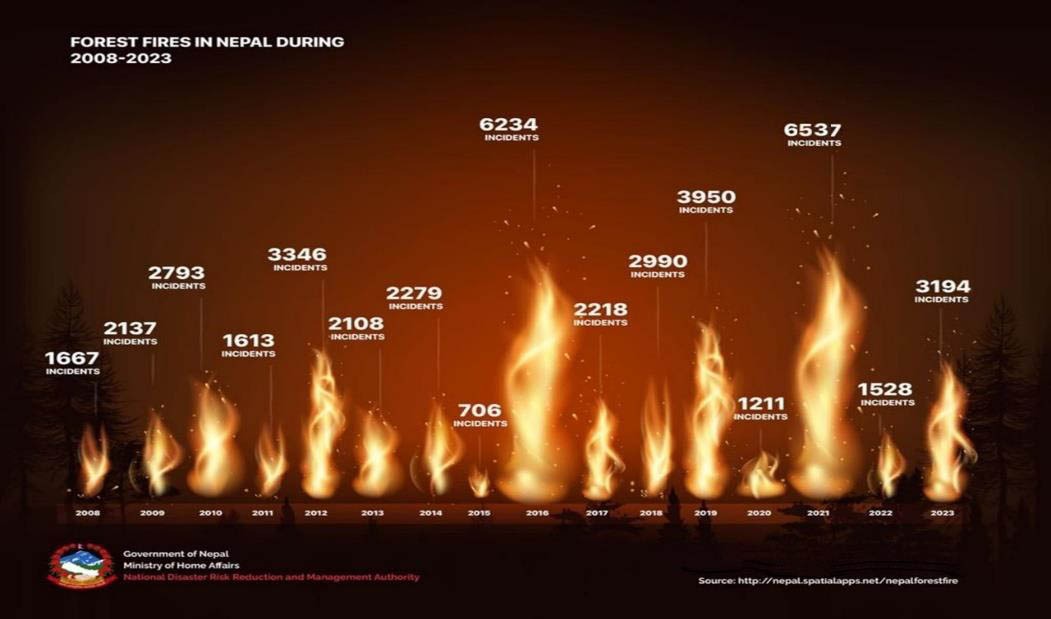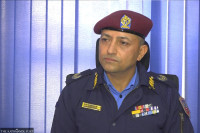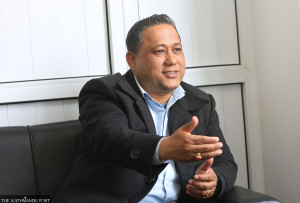Interviews
Next two months will be challenging due to fire incidents
Portable fire pumps are quite helpful in putting out fires in rural areas as well as cities of Nepal.
Thira Lal Bhusal
People lost their loved ones and incurred huge losses in fire incidents in various districts in the past weeks. At least 110 houses were gutted in Mahottari last week as fast-spreading fires engulfed an entire settlement. Just before that, several settlements were destroyed in Gulmi, Rupandehi and Arghakhanchi. The Post’s Thira Lal Bhusal sat down with Anil Pokhrel, chief executive of the National Disaster Risk Reduction and Management Authority, for insights on why fire incidents this year have become so common and alarming.
Fire incidents have been rising, causing huge losses in various parts of the country. What is the latest update?
We’ve experienced an unprecedented number of fire incidents across Nepal. Around two months ago, we had made projections that something like this could happen. We hosted a national dialogue on disaster with experts from the department of hydrology and meteorology, scientists, foresters and representatives from forest users groups. The experts said this year’s outlook doesn’t look good from the perspectives of fire incidents, mainly because we didn’t get sufficient rainfall this winter. We received only one fifth or 20 percent of average. So, we had sensed the alarming situation. Along with that, we also witnessed soaring temperatures. Average temperatures have risen in hill areas as well. At the emergency meeting on Friday, we briefed top authorities about the likely scenarios due to soaring temperatures and low rainfall. This time, we also witnessed heavy winds that helped spread the fire.
Are there other factors too that have made fires this year so disastrous?
Inadequate rainfall, increased temperatures and wind gusts are immediate factors. There are two other factors: No fire incidents of this intensity in the past two years and only 1,528 incidents in 2022 and 3,194 in 2023. In 2021, at least 6,537 fire incidents took place, whereas there were only 1,211 incidents in 2020. When you have below average forest fire incidents in the preceding years, there is an accumulation of forest litter. While the litter piled up on the forest floor this time, there was not enough rainfall to dampen it. Rising temperatures and wind gusts added fuel, helping fires spread faster.
Thus, the wildfires became more disastrous this time. Nine people have already lost their lives since Nepali New Year (April 13). The death toll of the two weeks is concerning. Deputy Prime Minister and Home Minister Rabi Lamichhane convened an emergency meeting on Friday where secretaries of the ministries concerned and security chiefs, among other senior officials, joined the discussions. We presented this scenario there and drew their attention to the fact that we still have another two months of dry season until the pre-monsoon rainfall. The next two months are going to be challenging.
Besides that, there is an increasing trend of stubble burning mainly because youths aren’t available in villages to work in the fields. Due to acute shortage of labour and high cost of clearing fields, people are resorting to burning stubbles, weeds and other remains. There is a perception among the farmers that the ashes work as manure. So, we need massive awareness and training to tackle the situation. People need to be educated about the wider effects of such acts in society. We have also seen unprecedented levels of damage to houses and settlements. When large swathes of forests are burnt, a long-developed ecosystem is destroyed. There are also indirect impacts on human health. In 2019, an estimated 42,100 deaths were attributed to air pollution in Nepal. Besides, the movement of bad quality air from our southern neighbour India is also causing problems. So, this is also a regional problem.

You said the ministry convened several meetings in and outside Kathmandu, held discussions among stakeholders and authorities concerned were also alerted. But why have our agencies failed to stop and contain fire incidents?
Yes, we have convened a series of dialogues on fire incidents. We also organised events for specific municipalities. The most recent one was in Madhesh Province, where chief district officers of all eight districts in the province, among other officials, were invited. Home minister chaired the meeting. We are taking such initiatives to expedite preparatory measures.
In fact, our forest coverage increased drastically in the past three decades. Globally, Nepal is taken as a success story in growing forests. This is positive but it also increases the risk of fires. We don’t have adequate human resources, training and equipment to protect these forests from fire. Also, the increasing trend of youths leaving the country and people migrating from the villages has exacerbated the situation. Women and the elderly who are left behind are more vulnerable to fire incidents. Homesteads of deserted houses are covered by bushes. We also find totally empty settlements. There is no gap between forests and settlements. These factors are causing disastrous fires.
What is the government doing to tackle the problem in view of this changed context?
We have introduced some new technologies based on our ground reality. Usually, we find people in our context go to the fire incident sites without any equipment and gear. There is also a lack of trained people across the country. So, we are focusing on training members of community forest groups. We now prioritise certain areas identified as hotspots. We are giving three types of training. We are training local volunteers who are working with palikas [local units] and other agencies at the local levels. We give orientation on how to put out fires in grasslands and bushes and how to do it when it spreads as crown fire. When trees start to burn people shouldn’t go there. Only fire brigades are useful in such cases. But fire trucks can’t go to difficult terrains. So, we have introduced portable fire pumps. We learned this from Japan’s national disaster management authority. These pumps are handheld. People can carry them on their own and use them in difficult terrains as well.
Can they effectively put out big fires?
They are quite effective. For that, you need a pond, a well or other source of water. Since last year, we have already used these water pumps in over 120 places and found them quite effective in dousing fires. At Friday’s meeting we decided to invest more in such pumps. I suggested every ward of local units need to have at least one such portable fire pump. They can’t replace fire trucks but are quite useful for us given our geographical features and even for narrow streets of a city like Kathmandu. You need Rs10 million to buy a fire truck, whereas around 20 portable pumps can be bought for the same amount. The cost ranges from Rs300,000 to around Rs1 million. So each ward can easily afford it. They can pump water from a distant pond or river in hill areas and it can be carried along with water tanks in narrow streets in towns. Maintaining a fire truck and fire brigade is difficult as we need drivers, firemen and their assistants. So, palikas may not be able to afford that. Therefore, we are planning to promote portable fire pumps.
In addition, we are designing a training curriculum mainly targeting three sections of people—volunteers of community forest users groups, security agencies including the forest guards and the disaster responders and district level officials who should understand its nuances. We are also running campaigns through various types of awareness materials. In the meantime, we have added search and rescue equipment mainly for security agencies and other personnel deployed in the tasks. Likewise, we have started adopting advanced systems such as helicopters to put out forest fires. First time, we doused forest fires from helicopters through the ‘bambi bucket operations’ in Pathibhara of Taplejung and then in Shivapuri and Tanahu as well.
Are palikas and other local agencies effective in tackling these cases?
We have found local community forest groups quite active in tackling fire incidents. They may not be able to handle big fires. So they coordinate and work with security agencies. Our legal system has given palikas the lead in such cases. So, our role is to equip the local governments. We handed over 100 portable fire pumps to them while around 14 have been sent to district emergency operation centres. Our focus is on equipping local governments. Of them, some do really well. Some others have average performance while yet others do really poorly. We need to form a group of volunteers in each local unit, train them and equip them with gears.

What about the role of provinces? Are they working effectively in disaster management?
Provinces are critical especially for undertaking risk assessments and determining which palikas have higher, moderate and lower levels of risks. They can help enhance the capacity of local governments and in reconstruction as well. Some provincial authorities are working as per that spirit, such as in Koshi and Bagmati. Karnali has introduced a new concept of insurance for humans as well as property loss.
In recent years, we have seen a rapid increase in the number of big business complexes in Kathmandu and other cities. But they don’t seem prepared to tackle fire incidents or other disasters. How do you see this trend?
This is a serious issue. We discussed this matter in Friday’s emergency meeting as well. We need to devise a system to assess risk in such buildings. These buildings need to be inspected and checked for whether there is a fire fighting system in place, adequate exits and evacuation systems. We will work on these issues with local governments as it falls under their jurisdiction.




 13.12°C Kathmandu
13.12°C Kathmandu










%20(1).jpg&w=300&height=200)

